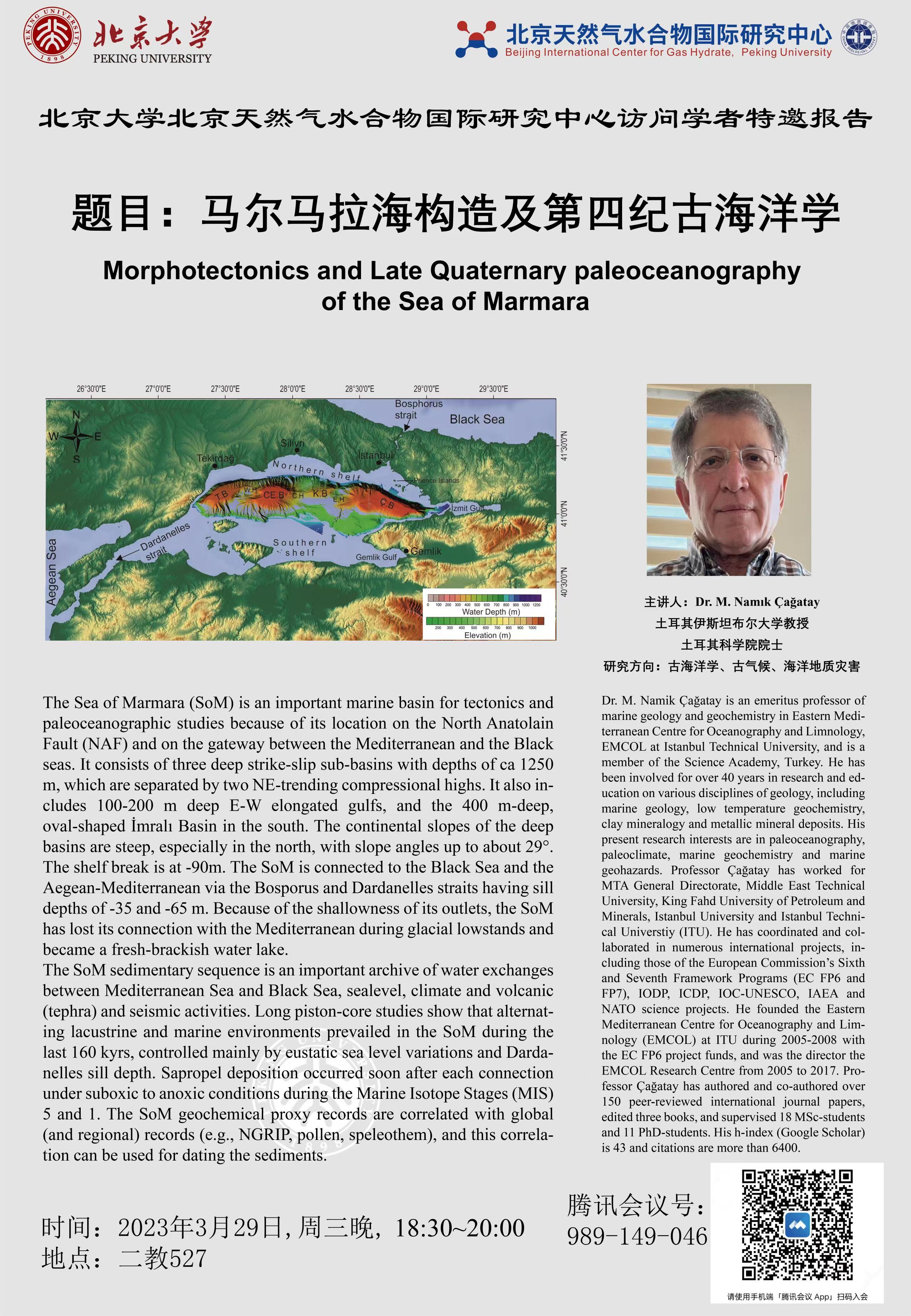Speaker: Dr. M. Namik Cagatay
Time: 18:30-20:00 pm, March 29, 2023, GMT+8
Venue: Tecent Meeting ID: 989-149-046
Abstract:
The Sea of Marmara (SoM) is an important marine basin for tectonics and paleoceanographic studies because of its location on the North Anatolain Fault (NAF) and on the gateway between the Mediterranean and the Blackeas. lt consists of three deep strike-slip sub-basins with depths of ca 1250 m, which are separated by two NE-trending compressional highs. It also includes 100-200 m deep E-W elongated gulfs, and the 400 m-deepoval-shaped Imrali Basin in the south. The continental slopes of the deerbasins are steep, especially in the north, with slope angles up to about 29°. The shelf break is at -90m. The SoM is connected to the Black Sea and theAegean-Mediterranean via the Bosporus and Dardanelles straits having sillepths of-35 and -65 m. Because of the shallowness of its outlets, the SoNaslostits connectio with the Mediterranean during glacial lowstands ancecame afresh-brackish waterlake.
The SoM sedimentary sequencs animnortantarchive otwater exchangebetween Mediterranean Sea and Blackcimate andvocanic(tephra) and seismic activities. Long piston-core studies show that alternatprevailed in the SoM during theing lacustrine and marine environmentlast 160 kvrs.controlled mainly bv eustatic selevel variations and Dardanelles sill denth. Sanronel denosition occurredsoon after each connectiorunder suboxic to anoxic conditions during the Marine Isotope Stages (MIS5 and 1. The SoM geochemical proxy records are correlated with globa(and regional) records (e.g., NGRIP, pollen, speleothem), and this correlation can be used for dating the sediments.
Biography:
Dr. M. Namik Cagatay is an emeritus professor of omarine geology and geochemistry in Eastern Mediterranean Centre for Oceanography and Limnology, EMCOL at Istanbul Technical University, and is amember of the Science Academy, Turkey. He habeen involved for over 40 years in research and education on various disciplines of geology, including marine geology, low temperature geochemistryclay, clay mineralogy and metallic mineral deposits. His present research interests are in palegraphypaleoclimate, marine geochemistry and marine geohazards. Professor Cagatay has worked for MTA General Directorate, Middle East Technical University, King Fahd University of Petroleum and Minerals, Istanbul University and Istanbul Technical Universtiy (ITU). He has coordinated and collaborated in numerous international proiects, including those of the European Commission's Sixtland Seventh Framework Programs (EC FP6 ancFP7)、IODP.ICDPIOC-UNESCO.IAEA anNATO science projects. He founded the EasterrMediterranean Centre for Oceanography and Limnology (EMCOL) at ITU during 2005-2008 with the EC FP6 proiect funds, and was the director theEMCOL Research Centre from 2005 to 2017. Professor Cagatay has authored and co-authored ove150 peer-reviewed international journal papersedited three books, and supervised 18 MSc-studentsand 11 PhD-students. His h-index (Google Scholar)is 43 and citations are more than 6400.
Source: Beijing International Center for Gas Hydrate
